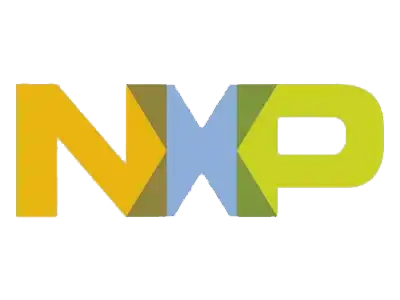In this post, we will explore how to enable seamless multi-cluster gRPC Remote Procedure Calls communication using Istio on Azure Kubernetes Service (AKS) using Kubernetes service Fully Qualified Domain Name. With the rise of distributed systems and microservices architectures, Istio provides an advanced service mesh solution that simplifies traffic management, security, and observability for microservices running across multiple Kubernetes clusters. This guide will walk you through the step-by-step process of setting up Istio with gRPC for cross-cluster communication, leveraging AKS to scale and manage applications in a multi-cluster environment.
Why gRPC and Istio for Multi-Cluster Communication?
In cloud-native applications built with gRPC, cross-cluster communication is essential to ensure scalability and high availability. Whether you are deploying microservices across regions for redundancy or optimizing traffic routing, a service mesh like Istio streamlines these processes.
What is Multi-cluster gRPC with Istio?
Multi-cluster gRPC is a high-performance, open-source framework designed for efficient communication between microservices, but when services span multiple clusters, managing this communication becomes complex. Istio enables secure, efficient, and observable communication across multiple AKS clusters while seamlessly supporting gRPC traffic.
In this post, we will set up a multi-cluster Istio deployment with gRPC for inter-cluster communication, providing you with the tools to scale your application architecture with resilience and security.
Note: This scenario works fine over the Azure CNI network. It may work over the Azure Kubenet and Overlay but for that we must create the services over the Load Balancer so it can be communicated from the cross cluster.
Literature Review
Although HTTP/REST remains popular for service communication, gRPC is rapidly emerging as the preferred choice for microservices because of its speed, support for multiple programming languages, and features like streaming, multiplexing, and bidirectional communication. gRPC uses Protocol Buffers (Protobuf) for efficient serialization, making it an ideal fit for high-performance environments. Istio, when configured for multi-cluster communication, is fully compatible with gRPC. It enables:
- Traffic Routing: Directing gRPC requests between clusters based on defined rules.
- Security: gRPC requests can be encrypted with mutual TLS (mTLS), ensuring secure communication between services across clusters.
- Observability: Metrics, tracing, and logging for gRPC calls across clusters, making it easier to track service performance.
Istio facilitates the global traffic distribution and load balancing needed for gRPC-based communication across regions, ensuring services interact with minimal latency.
Why Use Istio and gRPC Across Multiple AKS Clusters?
| Feature / Scenario | Multi-Cluster Istio with gRPC | Single Cluster Istio with gRPC | No Service Mesh (Vanilla Kubernetes) |
| Cross-Cluster Traffic Routing | Automatic, secure, seamless | No cross-cluster support | Manual setup (e.g., VPN) |
| Security (mTLS) | Built-in mTLS across clusters | mTLS within the cluster | Manual or no mTLS |
| Failover | Automatic failover between clusters | Limited to the same cluster | Manual failover setup |
| Global Load Balancing | Geo-aware routing, auto balancing | Not supported | External tools needed |
| Observability | Centralized multi-cluster tracing | Single cluster tracing | Basic or no observability |
| Scalability | Horizontal scaling across clusters | Limited to single cluster | Manual scaling |
| Complexity | Higher initial complexity, automated | Simpler, manual adjustments needed | Simple but manual management |
| Cost Efficiency | Optimized across clusters | Potential overprovisioning | Resource inefficiency |
How to Set It Up: Step-by-Step Process Overview
1. Initial Cleanup of Existing Istio Installations
Before starting with the new Istio setup, we uninstalled previous Istio configurations from both AKS clusters to ensure a clean slate.
export CTX_CLUSTER2=cluster2
# Uninstall Istio from both clusters
istioctl uninstall –purge -y –context=”${CTX_CLUSTER1}”
istioctl uninstall –purge -y –context=”${CTX_CLUSTER2}”
# Delete Istio namespaces if they exist
kubectl delete ns istio-system –context=”${CTX_CLUSTER1}”
kubectl delete ns istio-system –context=”${CTX_CLUSTER2}”
2. Download and Install Istio
We downloaded the required Istio version and set it up on the local system:
export ISTIO_HOME=/home/azureuser/istio-1.26.2
cd $ISTIO_HOME
3. Create Certificates
Certificates would require establishing secure communication between clusters.
cd $ISTIO_HOME/certs
make -f $ISTIO_HOME/tools/certs/Makefile.selfsigned.mk root-ca
make -f $ISTIO_HOME/tools/certs/Makefile.selfsigned.mk cluster1-cacerts
make -f $ISTIO_HOME/tools/certs/Makefile.selfsigned.mk cluster2-cacerts
4. Create Namespace
Create namespace for Istio in both clusters.
kubectl create namespace istio-system –context=”${CTX_CLUSTER2}”
5. Create secrets
Secrets store certificate details that are used to establish communication between clusters.
–from-file=cluster1/ca-cert.pem \
–from-file=cluster1/ca-key.pem \
–from-file=cluster1/root-cert.pem \
–from-file=cluster1/cert-chain.pem –context=”${CTX_CLUSTER1}”kubectl create secret generic cacerts -n istio-system \
–from-file=cluster2/ca-cert.pem \
–from-file=cluster2/ca-key.pem \
–from-file=cluster2/root-cert.pem \
–from-file=cluster2/cert-chain.pem –context=”${CTX_CLUSTER2}”
6. Install Istio in clusters
- To Create a cluster1 yaml filecat < cluster1.yaml
apiVersion: install.istio.io/v1alpha1
kind: IstioOperator
spec:
values:
global:
meshID: mesh1
multiCluster:
clusterName: cluster1
network: network1
EOF - To install Istio using the created cluster1 fileistioctl install –context=”${CTX_CLUSTER1}” -f cluster1.yaml -y
- To Create a cluster2 yaml filecat < cluster2.yaml
apiVersion: install.istio.io/v1alpha1
kind: IstioOperator
spec:
values:
global:
meshID: mesh1
multiCluster:
clusterName: cluster2
network: network1
EOF - To install Istio using the created cluster2 fileistioctl install –context=”${CTX_CLUSTER2}” -f cluster2.yaml -y
7. Create Remote Secrets
Remote secrets are required to establish a sync/communication between both clusters.
- For Cluster 1istioctl create-remote-secret \
–context=”${CTX_CLUSTER1}” \
–name=cluster1 | \
kubectl apply -f – –context=”${CTX_CLUSTER2}” - For Cluster 2istioctl create-remote-secret \
–context=”${CTX_CLUSTER2}” \
–name=cluster2 | \
kubectl apply -f – –context=”${CTX_CLUSTER1}” - Verify sync is establish or notistioctl remote-clusters –context=”${CTX_CLUSTER1}”
istioctl remote-clusters –context=”${CTX_CLUSTER2}”
8. Install Application in Both AKS Clusters
- Create namespace in both clusterskubectl create –context=”${CTX_CLUSTER1}” namespace grpcclient
kubectl create –context=”${CTX_CLUSTER2}” namespace grpcclient
kubectl create –context=”${CTX_CLUSTER1}” namespace grpcserver
kubectl create –context=”${CTX_CLUSTER2}” namespace grpcserver - Enable Istio in both namespaces by adding a labelkubectl label –context=”${CTX_CLUSTER1}” namespace grpcclient istio-injection=enabled
kubectl label –context=”${CTX_CLUSTER2}” namespace grpcclient istio-injection=enabled
kubectl label –context=”${CTX_CLUSTER1}” namespace grpcserver istio-injection=enabled
kubectl label –context=”${CTX_CLUSTER2}” namespace grpcserver istio-injection=enabled
9. Create gRPC Client Application
- YamlapiVersion: apps/v1
kind: Deployment
metadata:
name: grpc-client
spec:
replicas: 1
selector:
matchLabels:
app: grpc-client
template:
metadata:
labels:
app: grpc-client
spec:
containers:
– name: grpc-client
image: :
ports:
– containerPort: —
apiVersion: v1
kind: Service
metadata:
name: grpc-client
spec:
selector:
app: grpc-client
ports:
– port: targetPort:
protocol: TCP
type: LoadBalancer
Note: The service type can be set to ClusterIP for internal communication within the cluster, while an external LoadBalancer can be used to route traffic from outside the cluster to this service
- Create Applicationkubectl apply –context=”${CTX_CLUSTER1}” -f /grpcclient.yaml -l service= grpcclient -n sample
kubectl apply –context=”${CTX_CLUSTER2}” -f /grpcclient.yaml -l service= grpcclient -n sample - Validate servicekubectl get pod –context=”${CTX_CLUSTER1}” -n grpcclient
kubectl get pod –context=”${CTX_CLUSTER2}” -n grpcclient
10. Create gRPC Server Application
- Yaml: name à grpcserver.yamlapiVersion: apps/v1
kind: Deployment
metadata:
name: grpc- server
spec:
replicas: 1
selector:
matchLabels:
app: grpc- server
template:
metadata:
labels:
app: grpc- server
spec:
containers:
– name: grpc-client
image: :
ports:
– containerPort: —
apiVersion: v1
kind: Service
metadata:
name: grpc-server
spec:
selector:
app: grpc- server
ports:
– port: targetPort:
protocol: TCP
type: ClusterIP - Create Applicationkubectl apply –context=”${CTX_CLUSTER1}” -f /grpcserver.yaml -l service= grpcserver -n sample
kubectl apply –context=”${CTX_CLUSTER2}” -f /grpcserver.yaml -l service= grpcserver -n sample - Validate servicekubectl get pod –context=”${CTX_CLUSTER1}” -n grpcserver
kubectl get pod –context=”${CTX_CLUSTER2}” -n grpcserver
11. Check Connectivity Between Both Applications Using Curl
- Create a sample namespacekubectl create namespace sample
- Install curl utility inside the clusterkubectl apply –context=”${CTX_CLUSTER1}” -f $ISTIO_HOME/samples/curl/curl.yaml -n sample
- Execute command using curl serviceskubectl exec –context=”${CTX_CLUSTER1}” -n sample -c curl “$(kubectl get pod –context=”${CTX_CLUSTER1}” -n grpcserver -l service= grpcserver -o jsonpath='{. items [0]. metadata.name}’)” — curl -sS grpcserver. grpcserver:/
Conclusion
Implementing Istio for multi-cluster communication in Azure Kubernetes Service (AKS) provides a robust framework for building highly available, scalable, and secure applications. By enabling seamless service-to-service communication across clusters, it eliminates the complexities of manual networking configurations and ensures reliable connectivity, even in geographically distributed environments.
With Istio’s service mesh capabilities, applications relying on gRPC calls between microservices across clusters benefit from consistent service discovery, load balancing, and secure mTLS communication. This ensures that gRPC traffic—often used for low-latency, high-throughput workloads—remains reliable, encrypted, and observable regardless of cluster boundaries.
This approach significantly improves application elasticity by allowing workloads to be distributed across multiple clusters based on demand, disaster recovery requirements, or compliance needs. At the same time, it reduces operational overhead through centralized traffic management, uniform security policies, and Istio’s built-in observability features.
Moreover, the ability to monitor, trace, and log both HTTP and gRPC traffic from a unified control plane enhances visibility into system performance and simplifies troubleshooting. Development and operations teams can detect anomalies faster, enforce consistent policies across clusters, and ensure end-to-end security without compromising agility.
Overall, adopting multi-cluster Istio in AKS not only streamlines inter-cluster communication—including critical gRPC service interactions—but also strengthens reliability, optimizes resource utilization, and provides a single pane of glass for managing and securing modern cloud-native applications.














